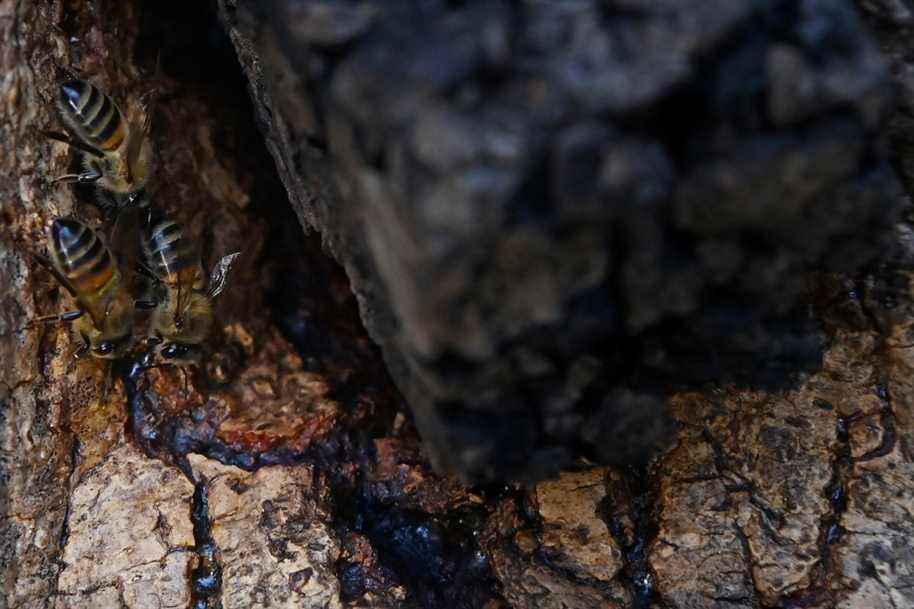(Woodstock) “Extraordinary, the queen lays! Enthuses Felipe Salbany. Suspended halfway up a centuries-old oak tree in central England, he observes rare wild bees through a small hole in the sturdy trunk.
“It’s a real classroom, it’s fantastic, incredible! »Continues, about this effervescent colony, the harnessed man about fifteen meters above the grounds of the majestic Blenheim Palace.
Long-time passionate about bees, this 55-year-old South African physiologist is convinced: these insects, of which he has spent a good part of the last 18 months searching for beehives in the ancient woods of the estate, are far from being ordinary.
They come, he explains, from a rare ecotype – a subspecies occupying a particular habitat – whose lineage dates back several centuries in this very part of Oxfordshire.
While DNA test results have yet to confirm, the discovery of potential descendants of endemic bees is already causing excitement in Blenheim and beyond.
It was believed that these populations had largely disappeared due to disease, pesticides and competition with alien species.
Up to 500 beehives
Bees play a central role in biodiversity through pollination, which is also crucial for agriculture.
According to Felipe Salbany, honey bees are used excessively to meet human consumption needs, with harmful effects for the environment: stress for the bees or the risk of supplanting other insects.
“The honey bee has developed a hero status, because it is the bee that we can manage […] but we marketed something that shouldn’t be, ”he says.
And native bees are under threat across the world. In the United Kingdom, where most of these insects are of foreign origin and live in managed hives, it is estimated that a third of endemic bees have disappeared in recent decades, decimated in particular by the varroa mite, a parasitic mite.
Blenheim’s bees do not appear to be affected, leading Felipe Salbany to believe they have adapted.
The estate has also proven to be an ideal environment for this ecotype, with large areas inaccessible to the public, the absence of managed hives or agricultural production using pesticides.
Its hundreds of hectares of ancient woods, largely preserved, have the largest concentration of ancient oaks in Europe. Some are almost 600 years old.
Felipe Salbany, a former international cyclist who trains athletes, began his research there without much belief.
To his surprise, he counted nearly 50 beehives nestled in trees, surprisingly resistant to the winter period. He estimates that their number could reach 500.
According to him, some beehives could be up to 200 years old. “Unfortunately, there aren’t many other places like it.”
“Original environment”
Blenheim bees are smaller, hairier and darker than those that typically inhabit managed hives in the UK.
“It is a bee that does not know the stress of pesticides, chemicals, survival,” he emphasizes.
Their existence has global implications, he believes. “If we can find local subspecies of bees […]we can learn much more about the environment and improve farming systems ”.
“Whether in Romania, Bulgaria or France, we need to look at the species that survive and understand the factors that affect bees, be it chemicals, pesticides, human intervention.” With the hope of keeping pollination, essential for life, at “good levels”.
Nick Baimbridge, head of the Blenheim forestry department, had barely noticed these bees during the three decades he worked for the Blenheim site. “We never really cared until Felipe came in and pointed out that it was so unique.”
For Rob Stoneman of the Wildlife Trusts association, this discovery is “remarkable”: “It shows the value and complexity of our ancient woods and the need to protect these unique habitats in perpetuity,” he told AFP.
